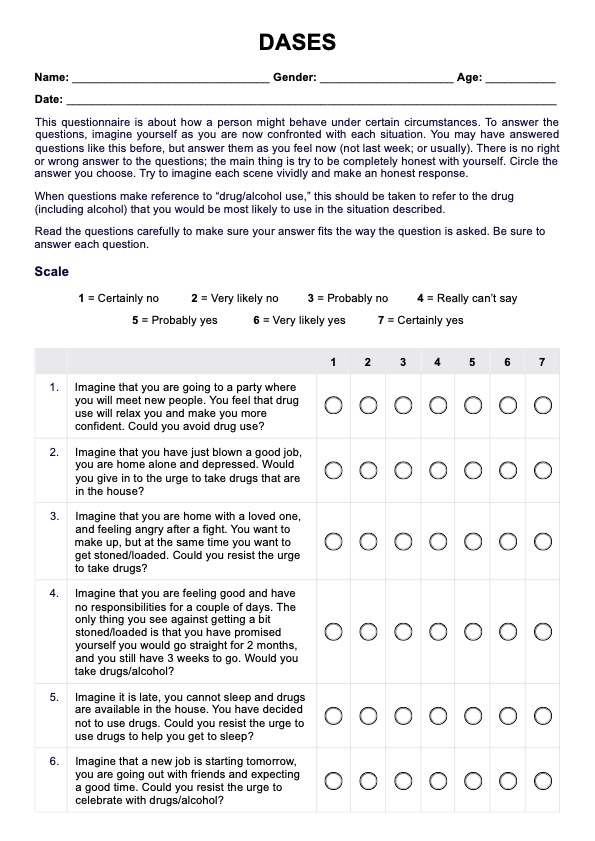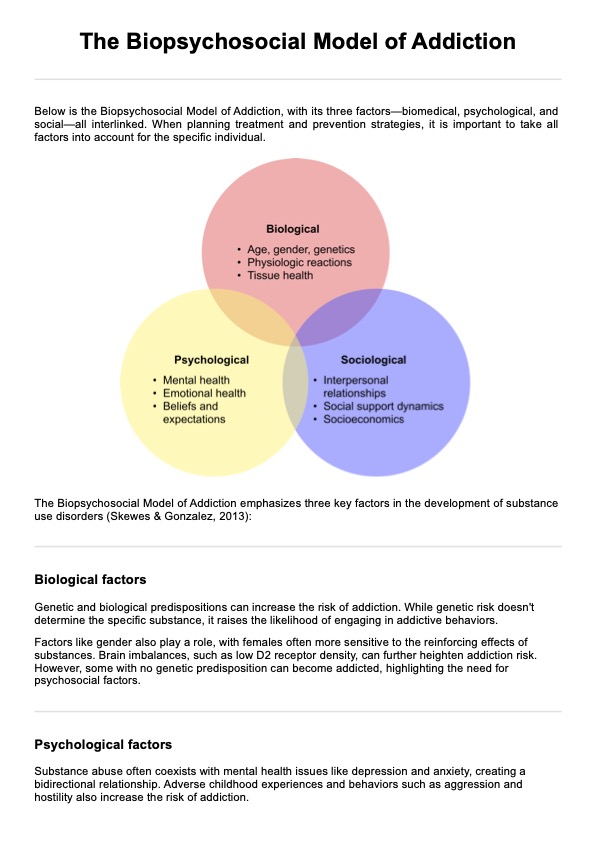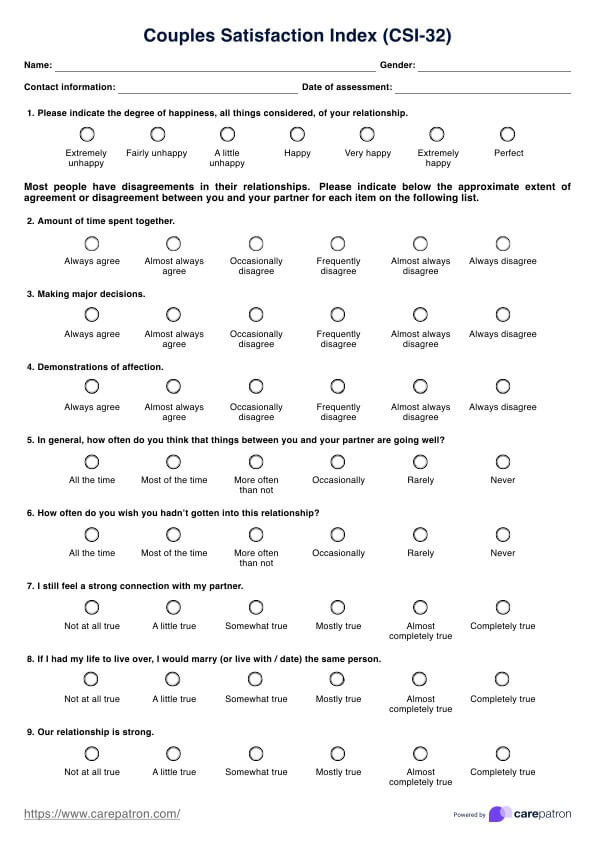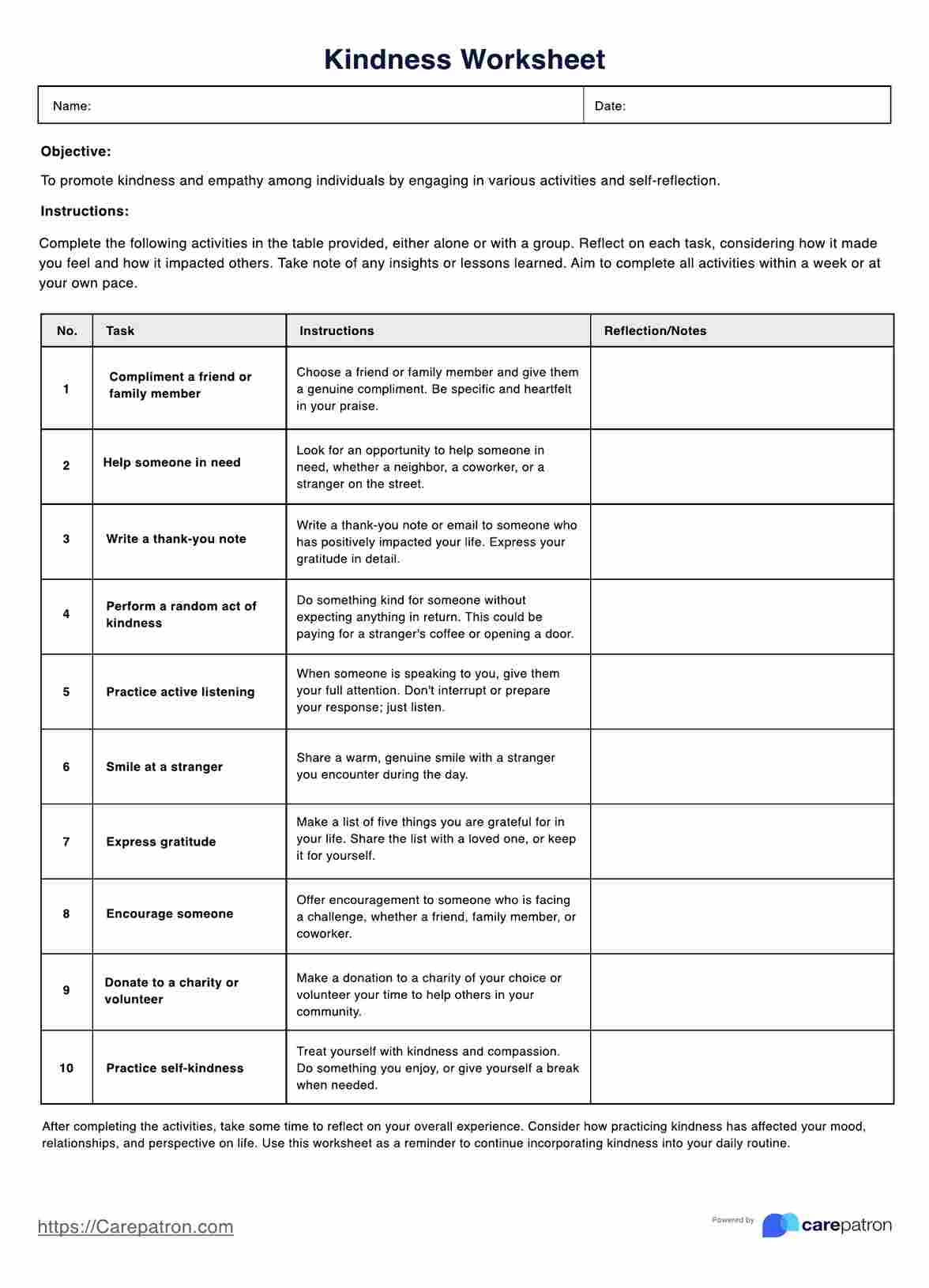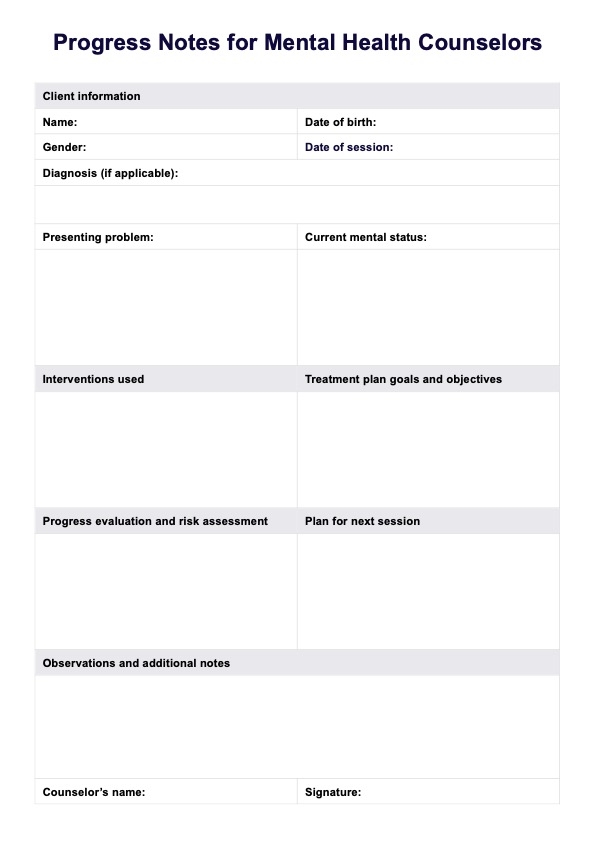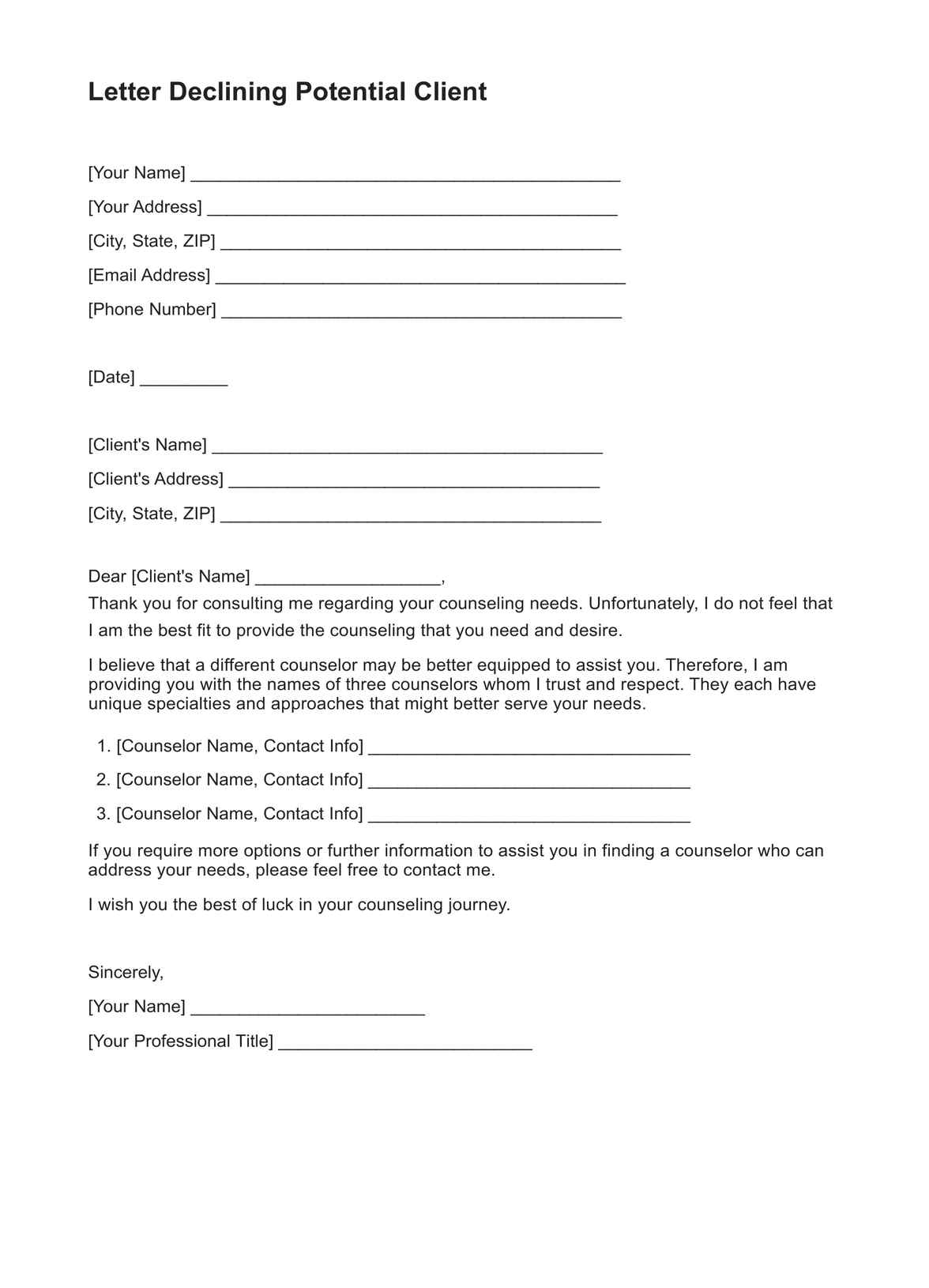AA Step 6 Worksheets
Enhance your recovery journey with the AA Step 6 Worksheet. A valuable tool for self-reflection and growth in addiction recovery. Start today.


What is an AA Step 6 Worksheet?
An AA Step 6 Worksheet is a valuable resource used in Alcoholics Anonymous (AA) programs to guide individuals through the sixth step of the AA Twelve Steps. AA is a worldwide fellowship that helps people struggling with alcohol addiction to achieve and maintain sobriety.
Step 6 is a critical stage in recovery, where individuals prepare themselves for the spiritual transformation necessary for long-term sobriety that involves confronting their character flaws and negative behaviors with the aid of newfound purpose or spirituality. Step 6 is "We're entirely ready to have God remove all these defects of character" to achieve significant change.
This worksheet is typically a structured document or form designed to help individuals reflect on their character defects, shortcomings, and behaviors contributing to their addiction. It provides a structured framework for self-examination and personal growth.
The AA Step 6 Worksheet is a valuable tool because it aids in the self-examination and personal growth necessary for recovery. It helps individuals become aware of their flaws and work toward becoming better, more responsible, and spiritually connected individuals.
AA Step 6 Worksheets Template
AA Step 6 Worksheets Example
How to use the AA Step 6 Worksheet
Practitioners can use this worksheet through the following steps:
Step 1: Provide the worksheet
Obtain an AA Step 6 Worksheet, either in printed form or from a trusted source online, such as Carepatron's template library.
Step 2: Give time for self-reflection
Begin by encouraging the client to dedicate time and find a quiet space for introspection. Let them review their journey in recovery, acknowledging their past actions, behaviors, and character faults that have contributed to their addiction while keeping in mind the progress they've made through the previous steps, like making a fearless moral inventory of themselves.
Step 3: Navigating character defects
Guide them in listing down character defects. These can include selfishness, pride, anger, or any other negative traits they have identified in their self-reflection. Let them reflect on specific examples of situations or behaviors where these character defects have manifested in their lives.
Step 4: Willingness to change
Allow them to reflect on their willingness to overcome these character defects. Guide them in considering their belief in a higher power or spiritual force. Help them explore how this belief can help them overcome their character defects and aid others undergoing the same process of reaching sobriety.
Step 5: Action steps
Together with your client, develop a plan to correct character defects, including making amends, seeking guidance, practicing humility, and engaging in self-improvement activities.
Step 6: Share and discuss
Share your completed worksheet with a trusted AA sponsor or mentor. They can provide valuable insights, support, and guidance.
Do note that this is one of many worksheets we have. Examples include the AA Step 2 Worksheet (believing that a higher power or purpose will help with the recovery process) and the AA Step 12 Worksheets (the culmination of the twelve-step program). We also have worksheets related to all the other steps:
When would you use this worksheet?
The AA Step 6 Worksheet is a valuable resource within the context of Alcoholics Anonymous (AA) and addiction recovery. It serves as a structured tool for individuals to engage in self-examination and personal growth, addressing character defects contributing to their addiction. Here's a list of scenarios when practitioners can recommend and utilize this form:
- Step 6 of the AA twelve steps: The most obvious use is during Step 6. Individuals working through the twelve steps can use this worksheet as part of their recovery process to prepare for the spiritual transformation required for lasting sobriety.
- In one-on-one counseling: Addiction counselors and therapists can incorporate the worksheet into their client sessions. It provides a framework for discussing character defects, self-awareness, and strategies for personal growth.
- Group therapy sessions: Group therapy settings, which are common in addiction treatment programs, can utilize this worksheet as a shared exercise. Group members can complete it individually and discuss their insights and action plans.
- Sponsorship and mentorship: AA sponsors and mentors are crucial in guiding individuals through their recovery journey. They can use the Step 6 Worksheet to facilitate discussions and provide personalized guidance.
- Ongoing self-reflection: Individuals in recovery can revisit this form regularly, even after completing Step 6. It is a tool for continuous self-improvement, helping individuals stay focused on their sobriety journey.
- Clinical documentation: Clinicians and healthcare professionals dealing with addiction treatment and recovery can incorporate completed worksheets into clinical documentation to track progress and tailor treatment plans.
- Teaching aid: Educators in addiction studies and recovery programs can use this worksheet as a teaching aid to help students and participants understand the practical application of Step 6 in the recovery process.
Benefits
Using this AA Step 6 Worksheet offers the following benefits:
Enhanced self-awareness
The AA Step 6 Worksheet serves as a mirror, allowing individuals to confront their character defects head-on. It prompts them to list and reflect on these defects, fostering profound self-awareness, a cornerstone of personal growth and recovery.
Targeted self-examination
This resource goes beyond mere acknowledgment; it delves into specifics. Encouraging users to provide concrete examples of situations where their character defects have manifested helps unearth deeply ingrained behavior patterns. This level of introspection can be transformative.
Accountability and personalized guidance
Completing the worksheet can be a collaborative effort. When individuals share their worksheets with a sponsor or mentor, it creates an accountability structure. These trusted guides can provide tailored guidance and support, making the journey to recovery less daunting.
Action-oriented recovery
The "Action Steps" section of the worksheet is particularly valuable. It pushes individuals beyond self-awareness and into action. Outlining practical steps to address each character defect empowers individuals to actively take control of their recovery. This hands-on approach is often more effective than passive reflection.
Sustained self-improvement
The worksheet isn't a one-time tool. It can be revisited regularly, even after completing Step 6 of the Twelve Steps. This promotes continuous self-improvement and reinforces the commitment to personal growth. It's a resource that supports lifelong recovery.
Integration into clinical practice
Incorporating completed worksheets into clinical documentation offers numerous benefits for addiction treatment professionals. It provides concrete evidence of a client's progress and helps effectively tailor treatment plans to address specific character defects, enhancing the quality of care provided.
Commonly asked questions
Individuals in addiction recovery, especially those following the Twelve Steps of Alcoholics Anonymous (AA), typically use AA Step 6 Worksheets for self-examination and personal growth.
AA Step 6 Worksheets are used during Step 6 of the Twelve Steps, where individuals assess their character defects. They can also be revisited regularly for ongoing self-improvement.
Users fill out the worksheet by listing their character defects, providing specific examples, reflecting on their willingness to change, and outlining actionable steps to address these defects. They may also discuss it with a sponsor or mentor.


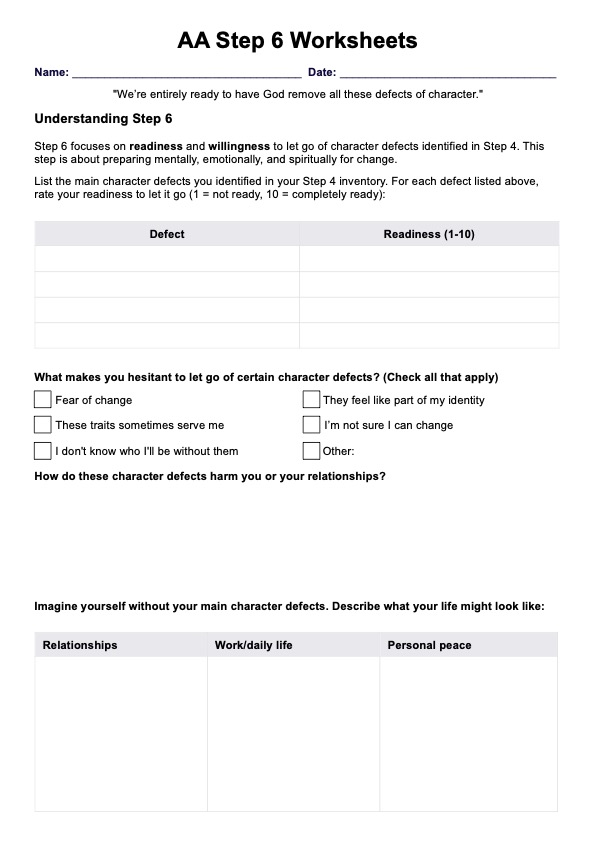
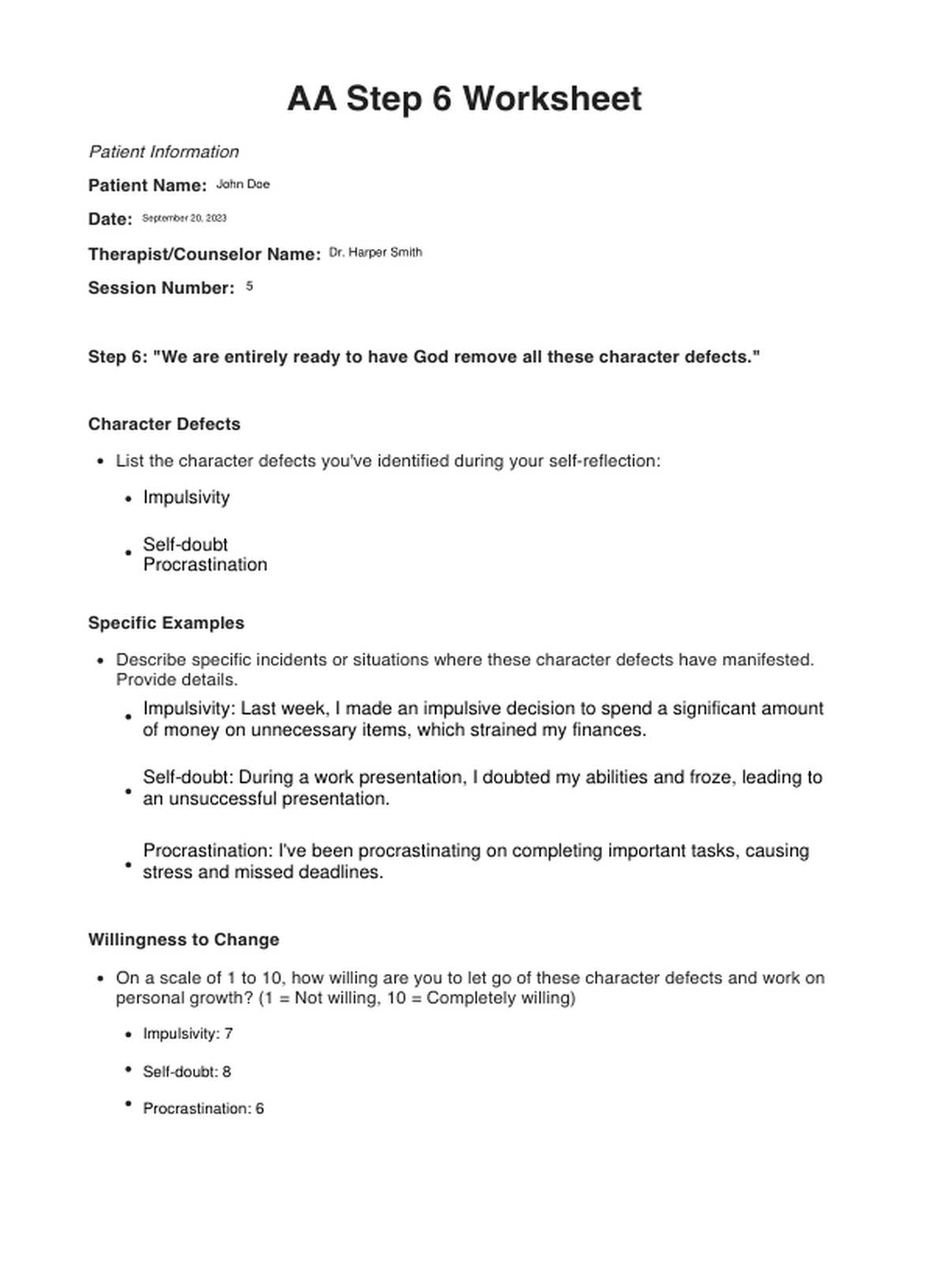

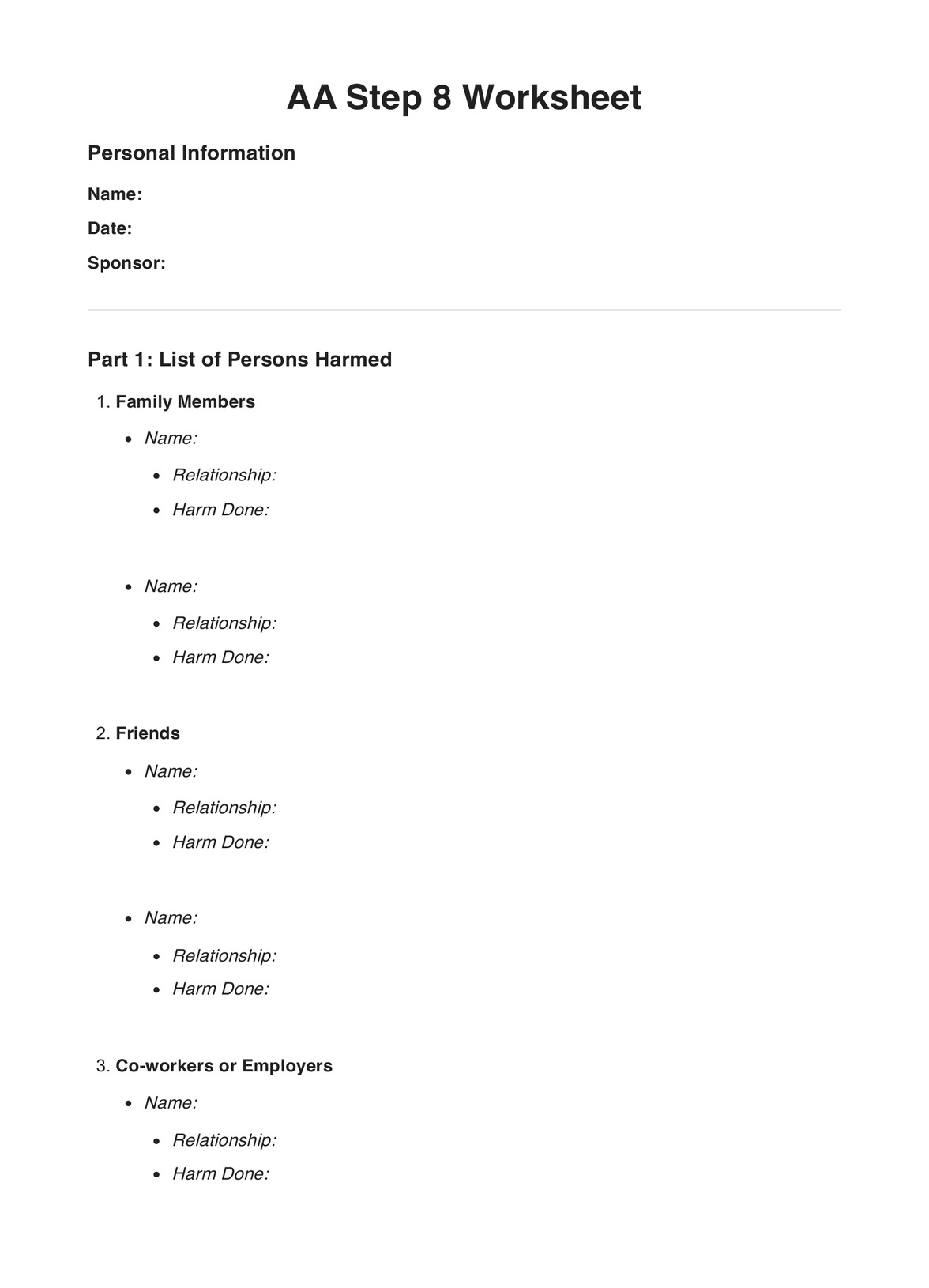
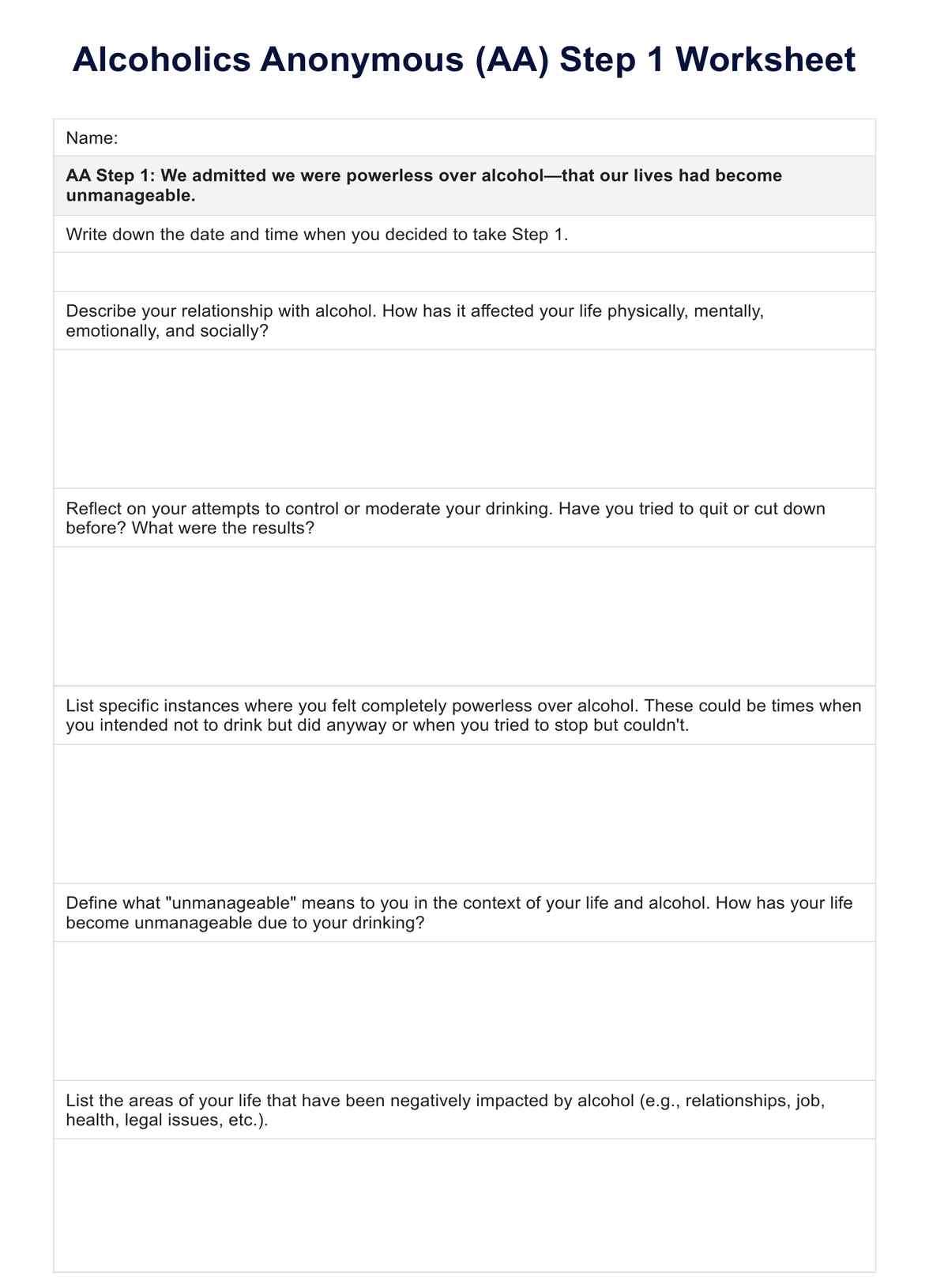
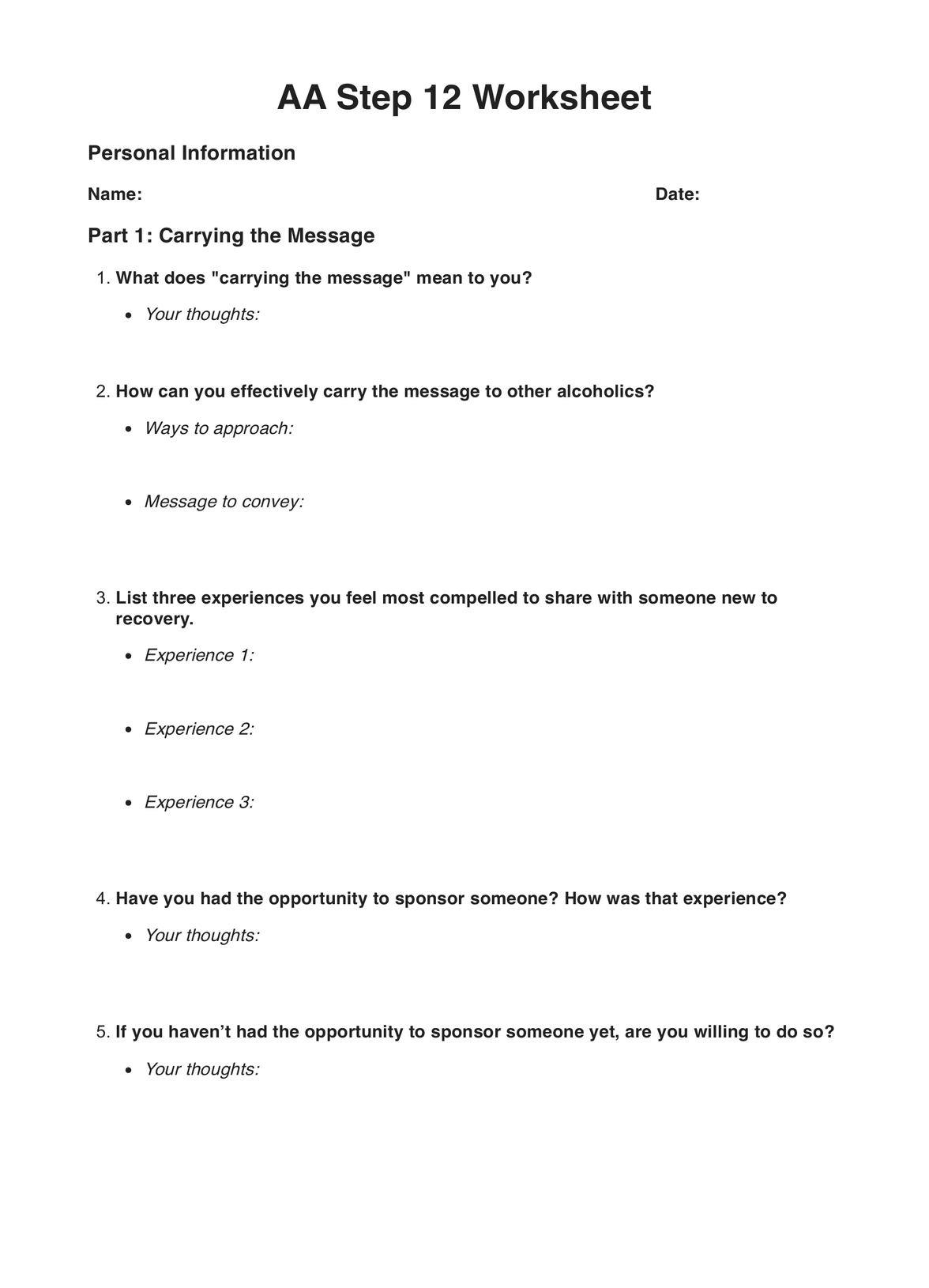
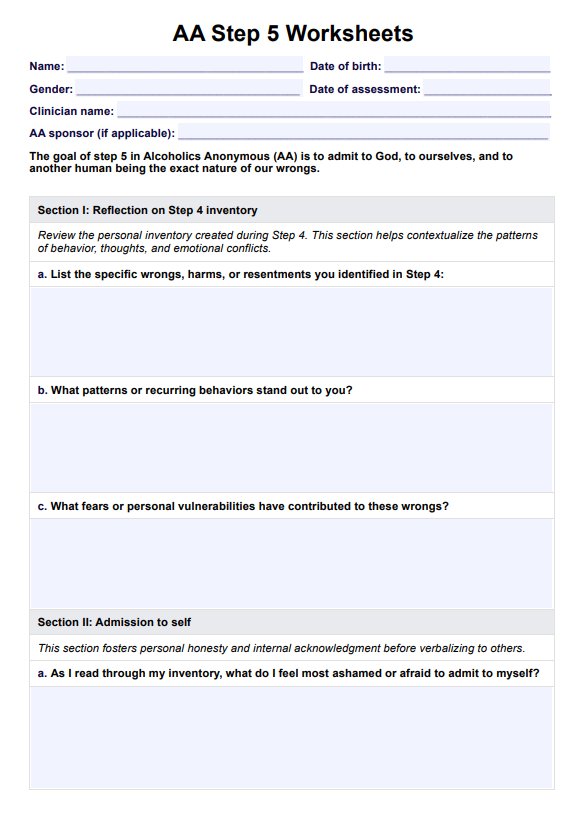
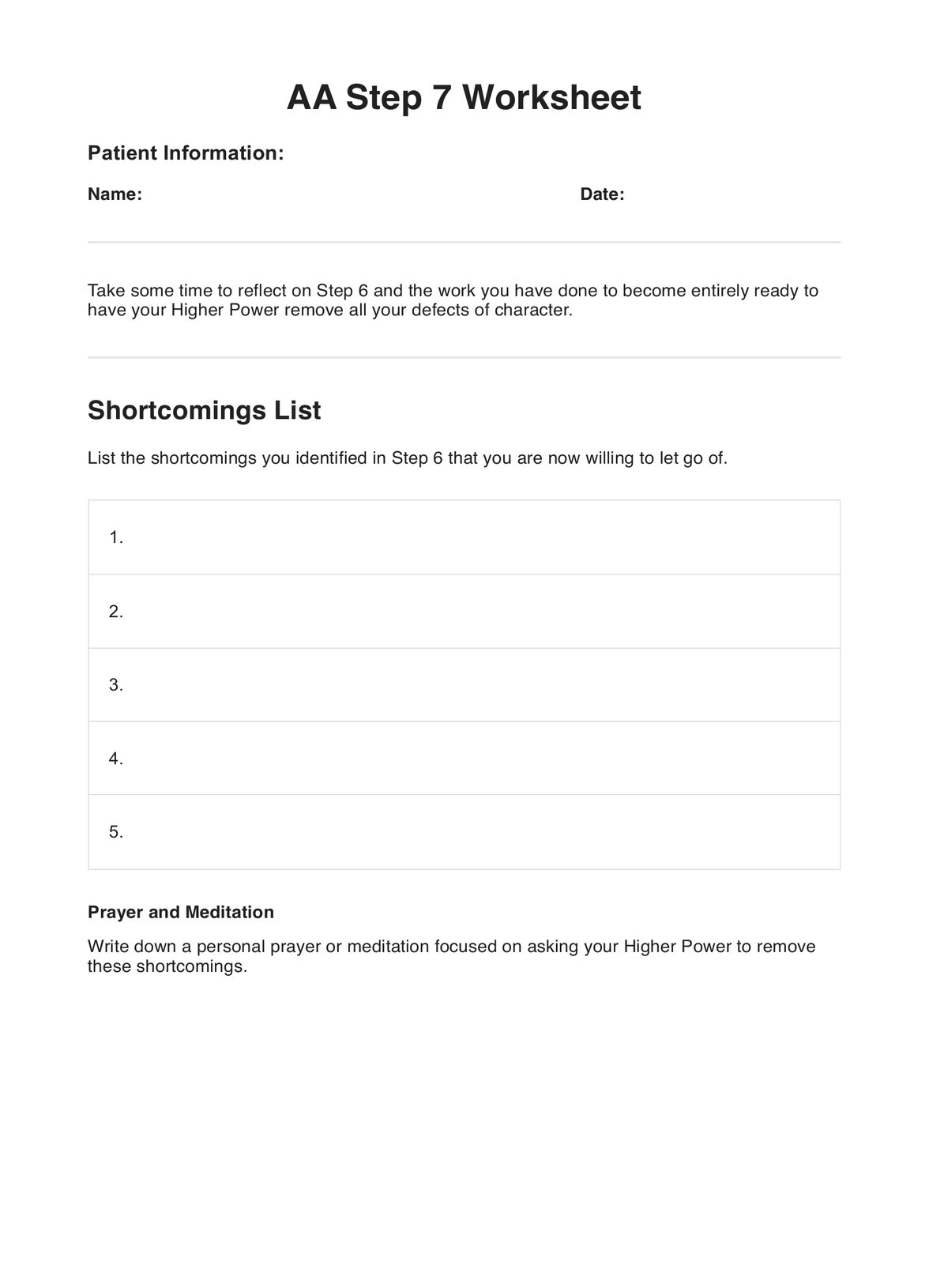
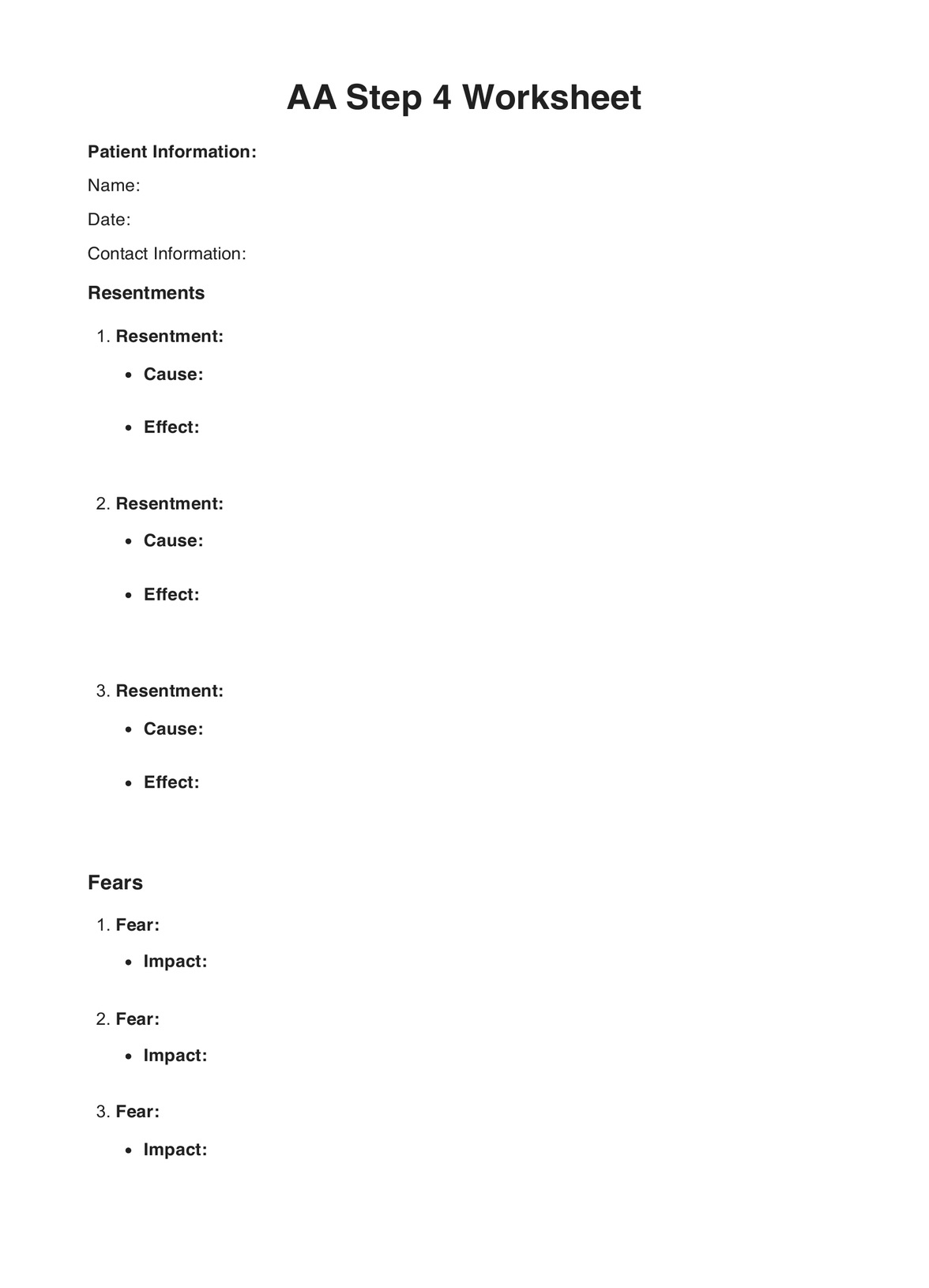
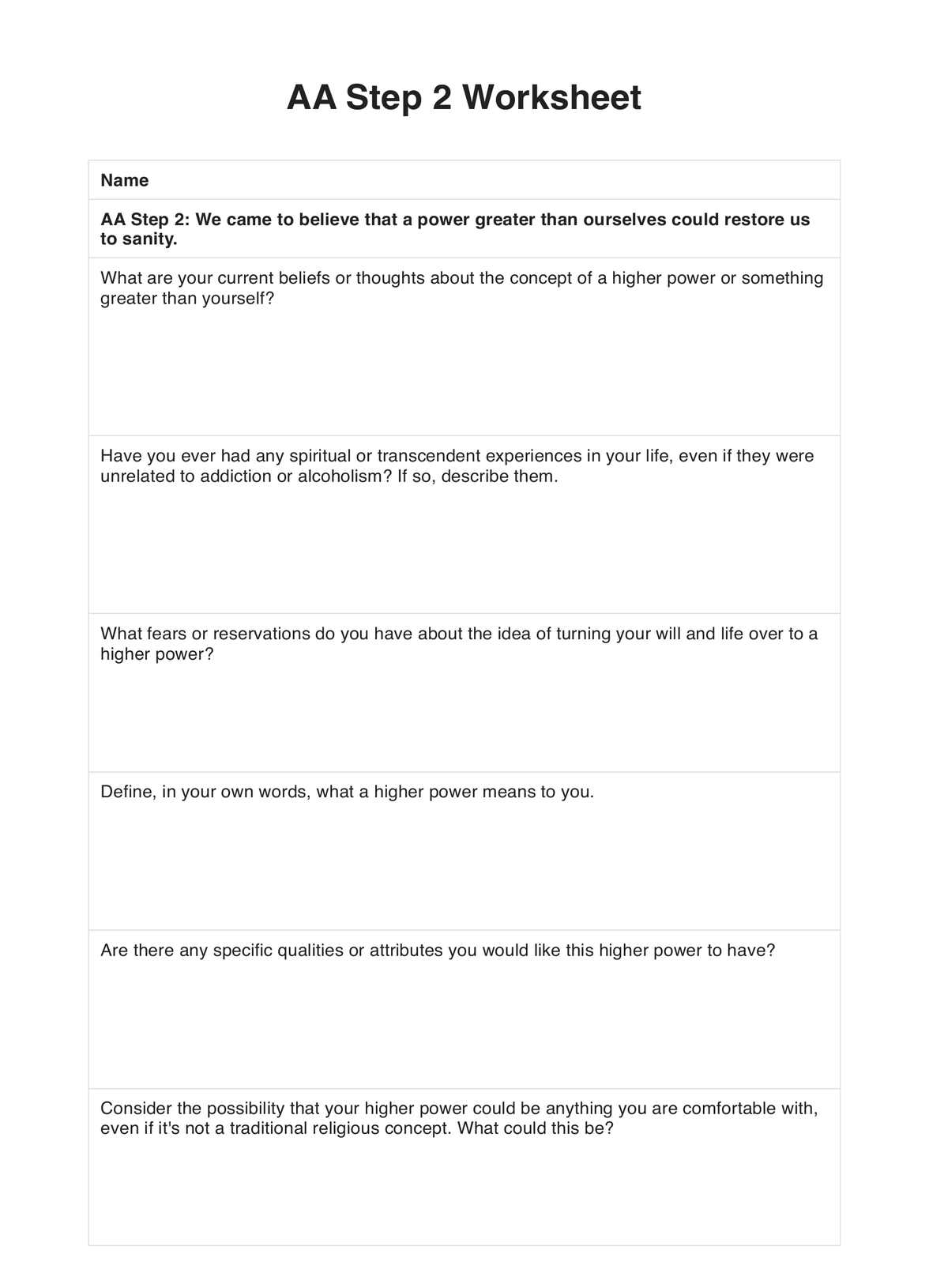
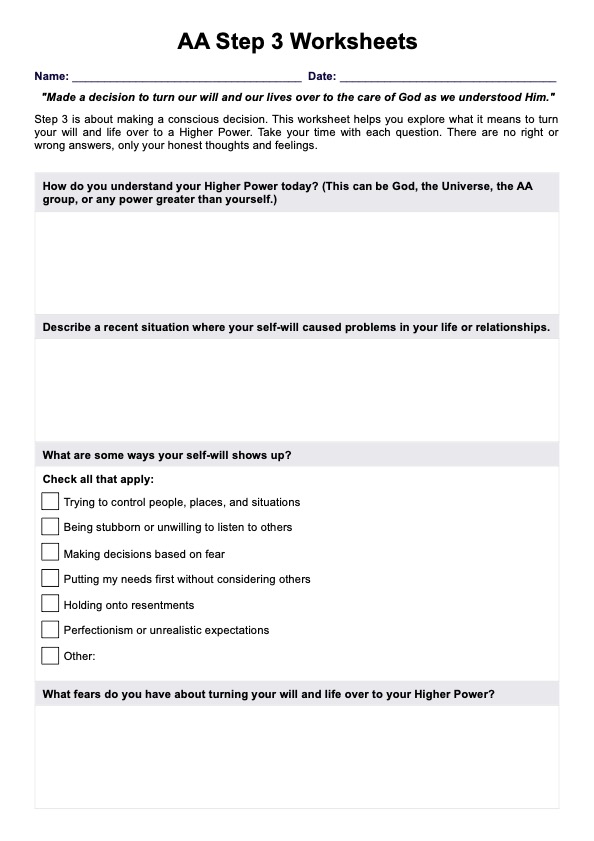
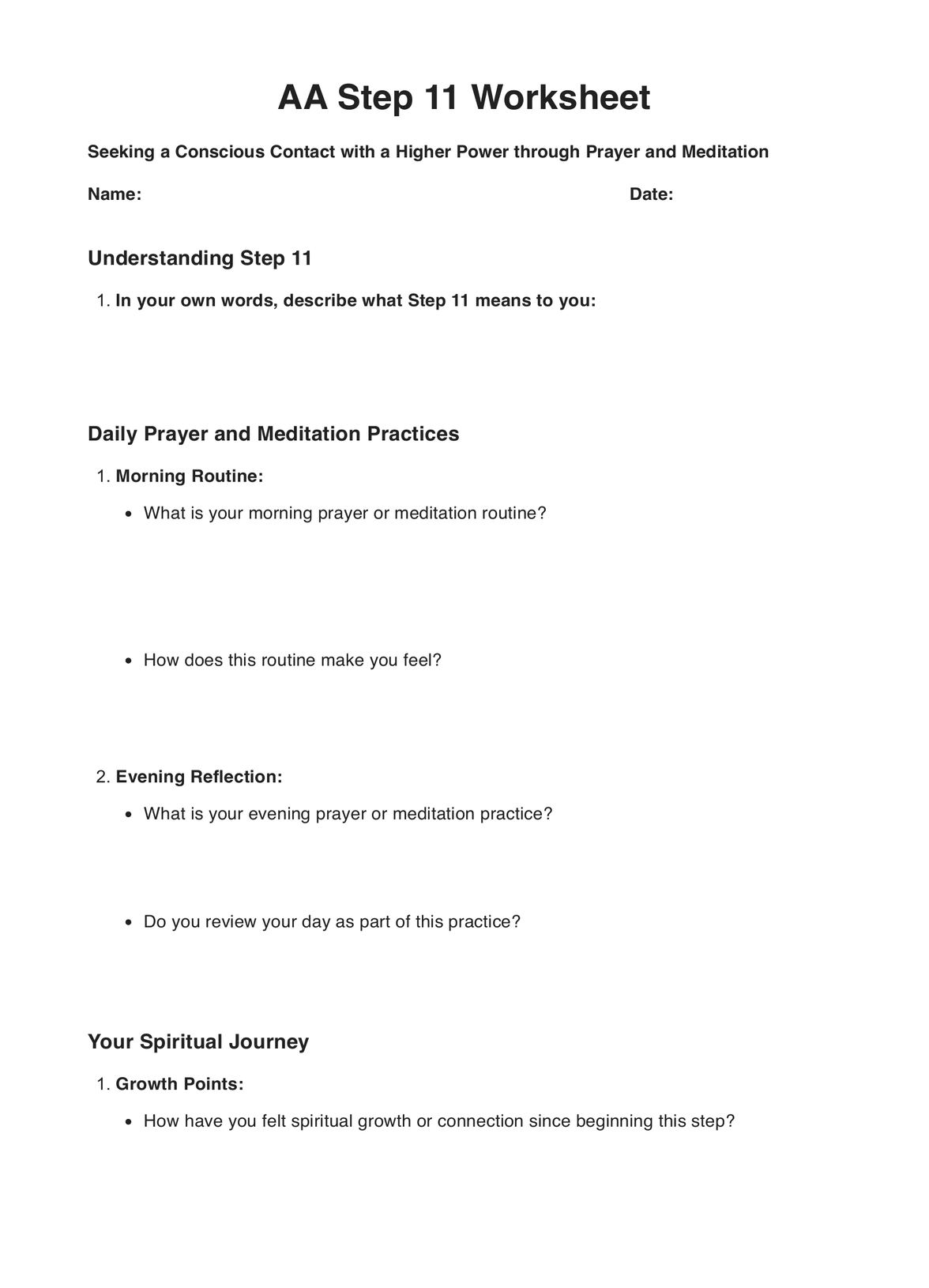
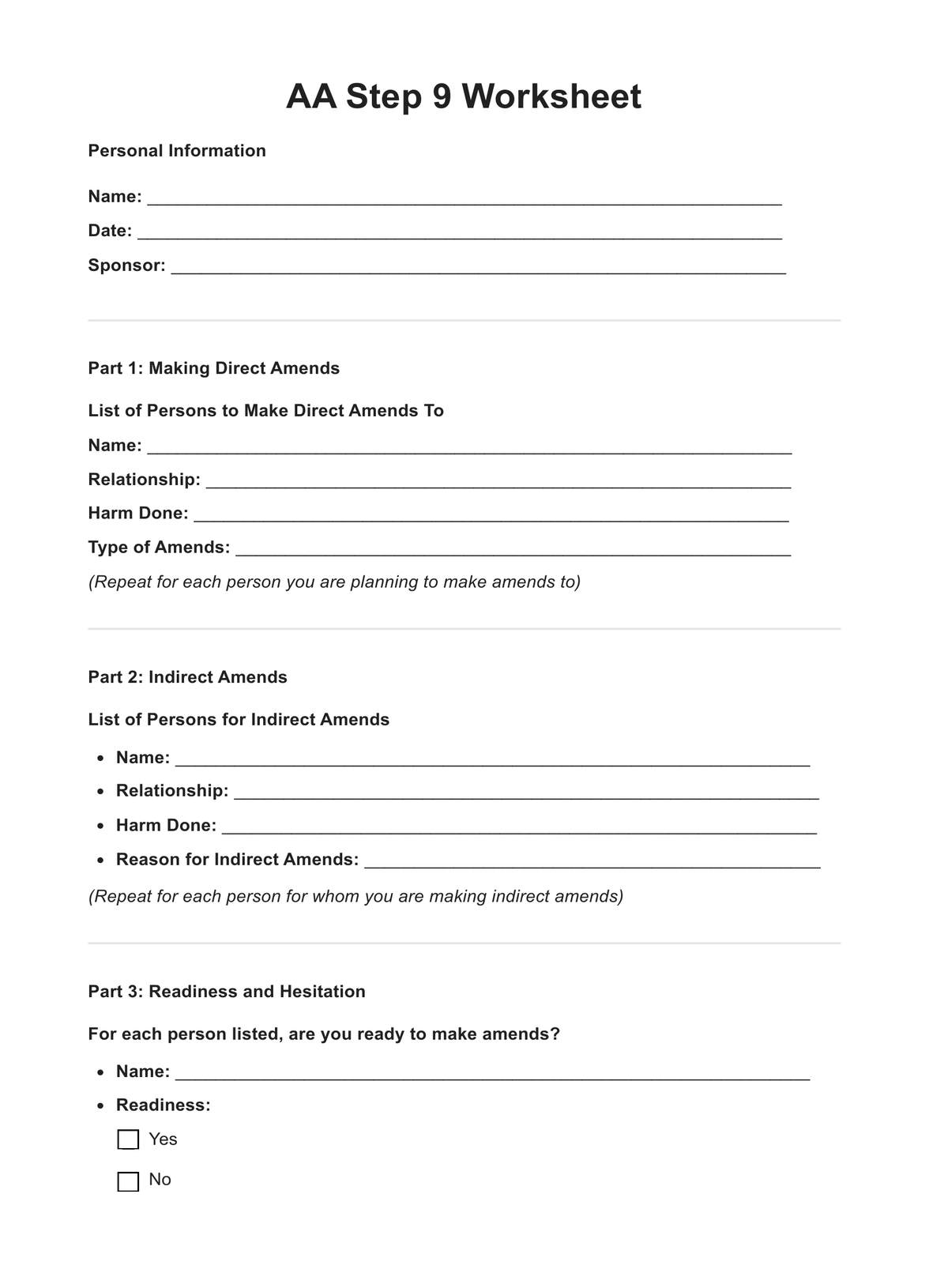

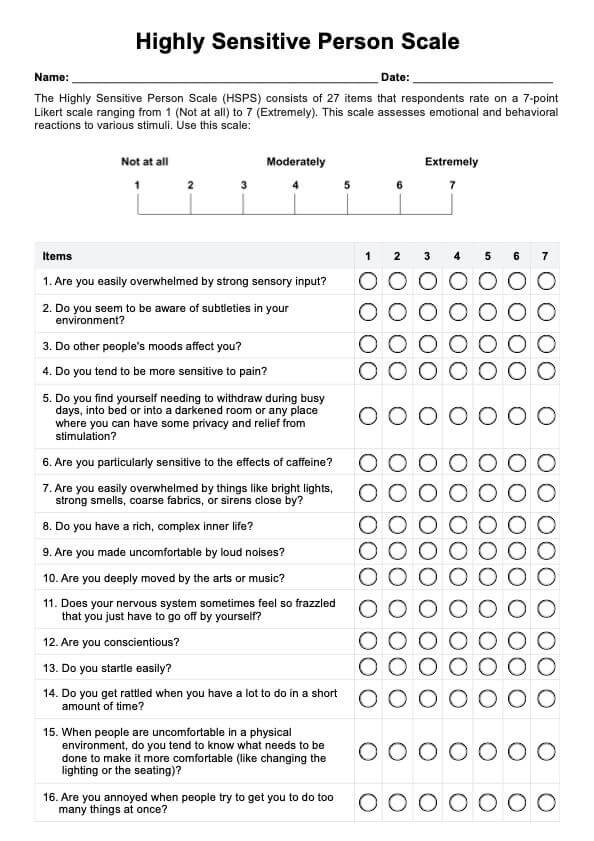










-template.jpg)


